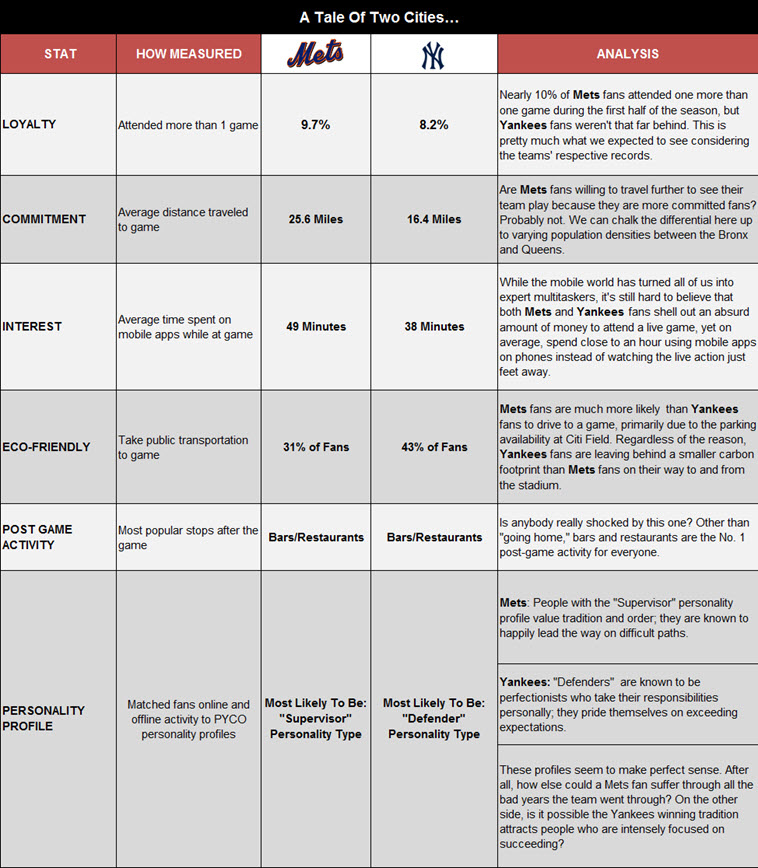Finally, quantitative research proves what experts have speculated for decades: Mets fans are more sophisticated than Yankees fans! OK, so that’s just how this lifelong Mets fan interpreted the data gathered after some digital reconnaissance at Citi Field and Yankee Stadium at the start of the 2016 baseball season. It all started about five months ago when I decided to take the leap and buy tickets for the Mets vs. Yankees game on August 3, 2016, which will be played at (gasp) Yankee Stadium. As a Mets fan, entering into enemy territory to support my team is always a frightening thought. Compound that with the sure-to-be taunting from the villainous Yankees fans and it’s easy to understand why the fear and anxiety was growing stronger by the minute. Maybe it was all in my mind. Are Yankees fans really that much different from Mets fans? Maybe they look at us the same way. Maybe THEY think WE are the offensive, pretentious and self-righteous ones. I needed to know more. And, naturally, as a digital marketer, mobile location and behavior research was the perfect way to find out.
What Is Mobile Location and Behavior Research?
Location-aware technologies such as geofencing, beacons and GPS allow marketers to gather anonymous data on a target audience based on their mobile phone location. The captured mobile location history provides a wealth of meaningful data, such as when that user visited a specific location, how long they stayed, where they went before and after, how frequently they visited and at what intervals. By combining location insights with online behavior (like websites visited and social media activity), it’s possible to unlock a deeper understanding of consumers than ever before.
Geofencing Citi Field and Yankee Stadium
In May, we placed a geofence (a virtual perimeter) around both Yankee Stadium in the Bronx and Citi Field in Flushing, Queens. Whenever an individual with a smartphone crossed over into one of the geofenced perimeters, it triggered a digital alert prompting our technology to begin gathering data. Over a three-month period, we gathered data on more than 1.3 million unique smartphones and their owners.
The Findings
After analyzing millions of data points and narrowing them down to a few key location and behavioral insights, the findings revealed some pretty interesting differences—and some surprising similarities. The data speaks for itself.

So maybe, in the end, mobile location and behavior research didn’t help me really understand why anyone would choose to be a Yankees fan, but this kind of data gathering does help brands understand more about their targets, like the best times and places to serve them a message or what makes one target audience different then another. What’s more, this kind of mobile location targeting can be used across a wide variety of businesses and events. Discover who’s coming to your university’s open house, who’s visiting your financial institution during the winter holidays or promote your benefit’s raffle to the attendees in real-time.
Even though we can’t improve either team’s playoff chances, we can at least know who, exactly, is cheering for each team.










